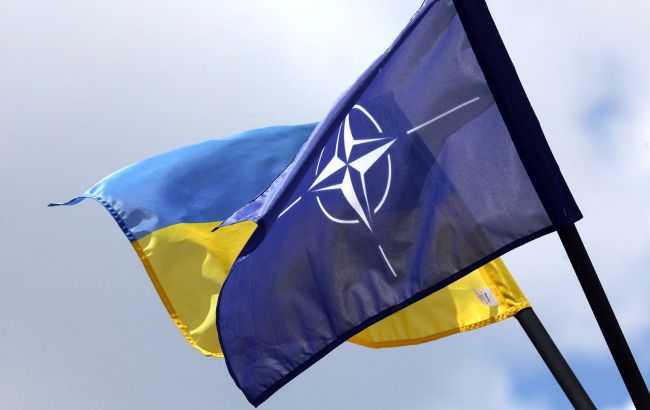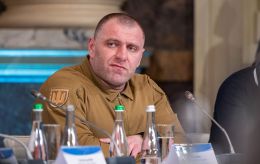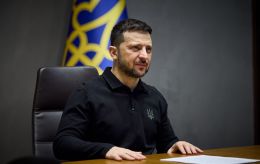Instead of NATO, allies pitch new security path for Ukraine
 Photo: Instead of NATO, allies pitch new security path for Ukraine (Getty Images)
Photo: Instead of NATO, allies pitch new security path for Ukraine (Getty Images)
Western allies, given the low probability of Ukraine’s accession to NATO, have supported an alternative strategy. They want to invest billions in Ukraine’s military industry so that the country can better repel Russian aggression, according to The Washington Post.
If this approach works, Ukrainian developments — from advanced drones to other military equipment — will in time be able to complement the armies of the US and Europe.
European and American officials are perceiving the threat from Russia more actively after signals from the Trump administration that NATO countries should not overly rely on the US in their defense. The recent falls of Russian drones into Polish airspace have heightened alarm in Europe.
Drones as an export and defense asset
Ukraine leads the world in drone technologies, said US Special Envoy for Ukraine Keith Kellogg at a conference in Kyiv. According to him, the exchange of drone technologies between Ukrainian and Western specialists is now being actively established.
Against the backdrop of the war, the pace of innovation has become a matter of survival: from development to delivery to the front and operational improvement takes minimal time. This is important both for Ukraine’s defense and for potential licensing and joint production with Western companies.
Combat experience dictates production pace
Manufacturers such as FRDM closely interact with frontline units and promptly take feedback into account, said the company’s founder, Vadym Yunyk. According to him, if a government order for 10,000 drones instead of 3,000 is placed, the enterprise is able to ramp up production within a month and a half.
The small number of soldiers in Ukraine has become one of the drivers of robotization and the use of autonomous systems. Thanks to this, drones and autonomous machines make it possible to strike targets remotely and more accurately, as well as deliver supplies and evacuate the wounded without risk to other fighters.
Drones in the structure of enemy losses
Ukraine’s small FPV drones are responsible for about 70% of Russian manpower and equipment losses within 15 km of the front line, according to Ukrainian authorities. At the other end of the spectrum are long-range strike drones capable of reaching more than 1,000 km and hitting targets deep inside Russian territory.
The medium-sized R-34 from FRDM has been modified — it flies three times farther and carries more guided munitions. This is an example of rapid adaptation of products to the needs of the front.
Traditional armored vehicles are also being modernized
Ukrainian manufacturers are not limited to drones. The Ukr Armo Tech created the Gurza-1 armored personnel carrier with modifications for protection against drone strikes, and the more maneuverable Gurza-2 will soon go into series production.
The company produced 500 vehicles last year and plans to triple its capacity. Experts note that Ukraine is ahead of some European companies in taking into account the enemy’s characteristics when designing armored vehicles.
Europe invests to create a “steel porcupine”
European Commission President Ursula von der Leyen said that with more active European financial support, Ukraine’s army and defense industry could become a “steel porcupine,” reducing the country’s vulnerability. Kyiv aims to produce at least $30 billion worth of weapons annually — about three times the current level.
In addition to money, Ukraine is offering licensing and joint production with Western companies to integrate technologies directly into allies’ supply chains. This approach assumes that European governments invest in domestic production and then pay for purchases for their own armies.
Joint projects and financing
Denmark became the first country to directly finance Ukrainian defense enterprises, and recently, Ukraine announced a partnership with Danish companies to produce components for missiles and drones on Danish territory. The UK has stated its intention to follow this example.
A group of countries, including Denmark, Sweden, Canada, Norway, and Iceland, allocated €1.3 billion for the production of artillery, strike drones, missiles, and anti-tank systems. Germany has also concluded similar agreements, the details of which have not yet been made public.
European Commission President Ursula von der Leyen stated that the European Union would allocate €6 billion from frozen Russian assets and create a new cooperation format, the Drone Alliance.
According to the Financial Times, Ukraine will share drone countermeasure technologies with Europe.

